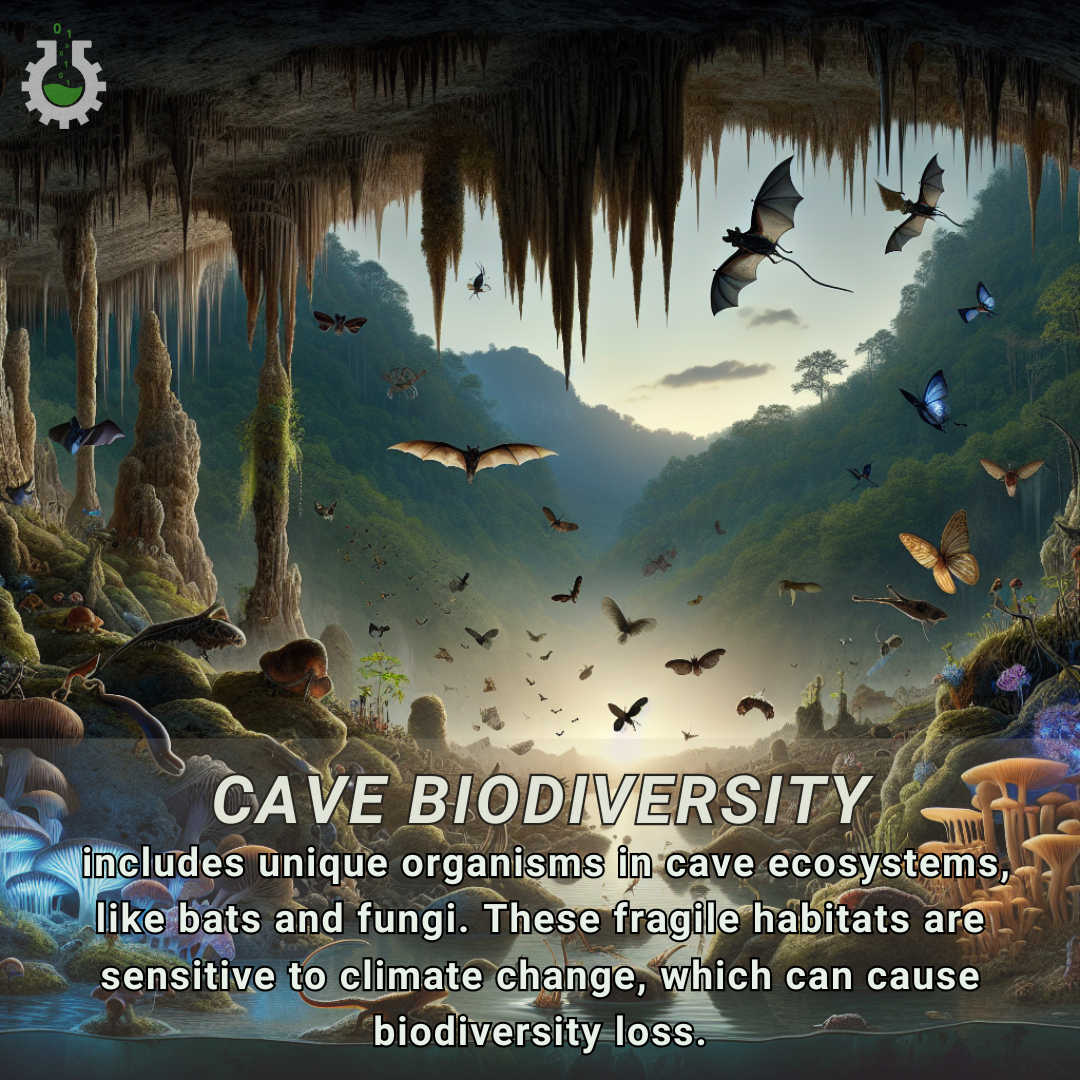September 4, 2024
Climate Change Poster Collection of the Week – Cave Biodiversity
Book a Demo
This week’s Climate Change Poster Collection focuses on Cave Biodiversity. Cave ecosystems, with their unique and often fragile biodiversity, are some of the most intriguing yet overlooked natural habitats on Earth. These subterranean worlds, hidden away from the hustle and bustle of surface life, harbor a plethora of specialized organisms that have adapted to the stable, dark, and nutrient-scarce conditions over millennia. From blind fish and albino insects to delicate fungi and bacteria that thrive in the absence of sunlight, the biodiversity within caves is both remarkable and highly specialized. However, this delicate balance is increasingly under threat from the pervasive impacts of climate change.
As surface temperatures rise and precipitation patterns shift, the microclimates within caves are also affected, leading to changes in temperature and humidity that can be detrimental to cave-dwelling species. These organisms, which have evolved to thrive in stable conditions, often lack the resilience to adapt quickly to such changes, making them particularly vulnerable. For example, many cave species have specific temperature and humidity ranges within which they can survive. Even slight deviations from these ranges can be fatal, leading to declines in population and, in some cases, extinction. Moreover, the interconnectedness of cave ecosystems means that the loss of one species can have cascading effects on others, disrupting the delicate balance that has been maintained for centuries.
Furthermore, altered rainfall patterns can disrupt the hydrological systems that many cave ecosystems depend on. Caves often rely on a consistent flow of water from the surface, which brings in essential nutrients and supports both aquatic and terrestrial species. Changes in precipitation can lead to reduced water flow, affecting the availability of these nutrients and potentially leading to the desiccation of cave habitats. On the other hand, increased rainfall and flooding can introduce pollutants and sediments into caves, further stressing the resident organisms. The nutrient and carbon cycles within caves, which are intricately linked to surface conditions, are also at risk of being disrupted. For instance, changes in vegetation and soil composition on the surface can alter the types and amounts of organic matter that enter caves, affecting the food web and nutrient dynamics within these ecosystems.
Additionally, human activities such as tourism and mining, which are often exacerbated by climate change, add another layer of stress to these already vulnerable habitats. Tourism can introduce pollutants, disturb wildlife, and lead to physical damage to cave structures. Mining, on the other hand, can lead to habitat destruction and contamination of water sources. The combined effects of climate change and human activities can create a perfect storm of challenges for cave ecosystems, making it even more difficult for these fragile environments to recover and adapt.
Understanding the connection between climate change and cave biodiversity is crucial for developing conservation strategies that protect these hidden worlds and the unique life forms they support. Researchers are increasingly recognizing the importance of studying subterranean ecosystems to gain insights into the broader impacts of climate change on biodiversity. By monitoring changes in cave environments and the responses of cave-dwelling species, scientists can develop more effective conservation measures and mitigate the impacts of climate change on these fragile ecosystems.
As we continue to explore and understand the full scope of climate impacts, it is essential to include these subterranean ecosystems in the conversation, ensuring that their silent, dark corners are not forgotten in the fight against climate change. The preservation of cave biodiversity is not only important for the species that inhabit these environments but also for the broader ecological and geological processes that they support. By protecting cave ecosystems, we can help maintain the intricate web of life that exists both above and below the surface, ensuring the resilience and health of our planet for future generations.
Discover an inspiring collection of climate change poster.



